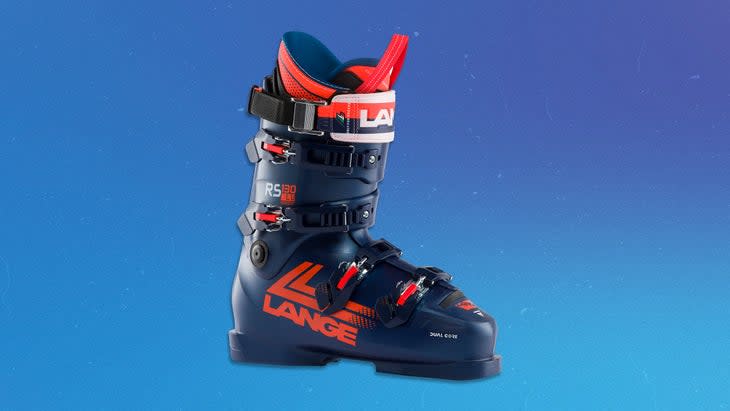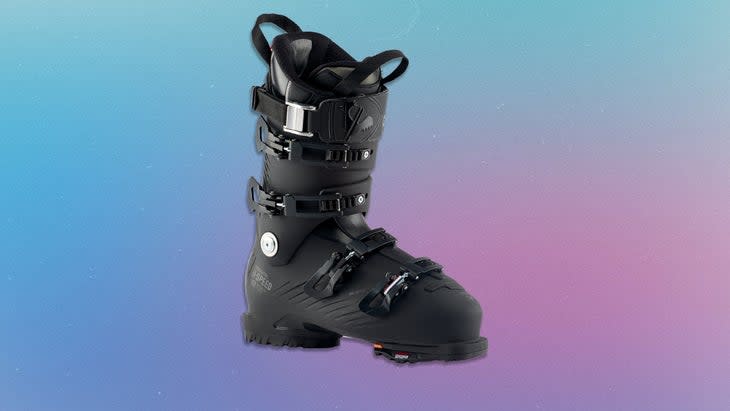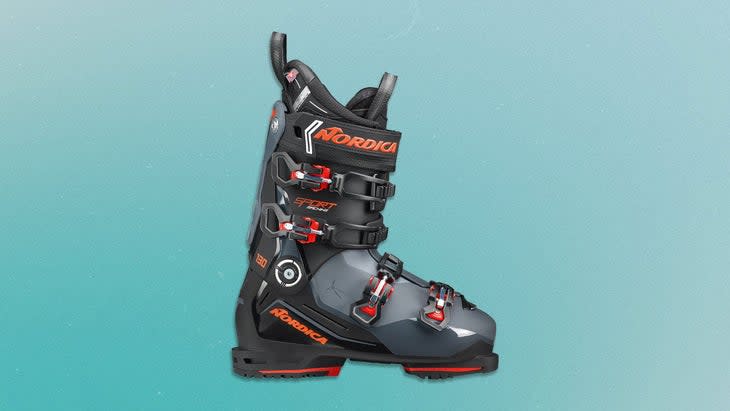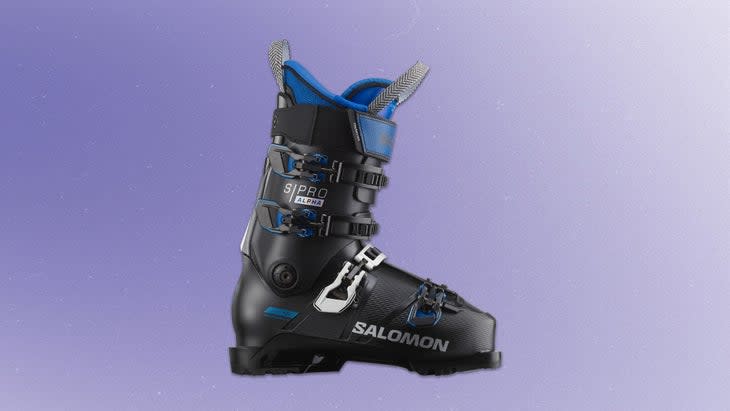The Best Alpine Ski Boots of 2023
This article originally appeared on Outside
This article was first published by SkiMag.com.
You know ski boots are your most important piece of equipment, so you want to get the perfect pair. The problem is, there are so many different options out there now. Here's the good news: Shopping for ski boots isn't actually as overwhelming or complicated as it seems. You just need to be able to answer one basic question to start: Do you want a traditional downhill ski boot, or a ski boot that you can use at the resort and in the backcountry (i.e. a hybrid boot)?
Looking for women's alpine ski boots? Check out the reviews here.
Alpine Ski Boots vs. Hybrid Ski Boots
Traditional alpine boots are designed to enhance performance for the type of skiing you're likely to do at the resort: making turns at faster speeds, on firm and chopped up snow, and using more edging skills. Alpine boots (also known as downhill boots) are made with heavier, stiffer plastics that encourage better energy transfer when you're doing this kind of skiing at the resort. While alpine boots may include some features you'll see on hybrid boots these days, like GripWalk soles and walk/hike modes, they differ from hybrid boots in that they're heavier and designed to be compatible with traditional alpine bindings--they do not feature the metal tech inserts in the toe that you see on hybrid or alpine touring boots designed to work with alpine touring or hybrid backcountry bindings.
If you're looking for a hybrid boot, head over to this page to peruse the year's best ski boots designed for resort and backcountry skiing. If you're a dedicated resort skier looking for a new ski boot you'll use exclusively at the resort, you're in the right place.
How to Buy Ski Boots
Here we list our gear testers' top-rated alpine ski boots built with downhill performance in mind. Important note: Our gear testers are all advanced and expert skiers, so most ski in a high-performance alpine boot with a stiff flex (around 120 or higher). While we're big fans of the boot models listed below, they may not be the right fit or choice for you. Unless you're an experienced skier and know your boot size, volume, flex and last, visit a professional bootfitter to figure out what boot is best for your physique and skiing style. If you determine a Low Volume boot or 130 flex isn't right for you, consider other models of the boot families listed below--more often than not, these boot lines offer a variety of volume and flex options.
Related: Here's what you need to know before you go to a bootfitter
Reviews: The Best Alpine Ski Boots of 2023
Lange RS 130 LV ($1,000)

Flex: 130
Last: 97mm
Volume: Low (LV)
Best for: Expert skiers who demand a stiff boot and excellent energy transfer for on-piste charging
The Lange RS 130 LV was our testers' favorite in the high-performance category for early morning corduroy. In the world of frontside boots, Lange's Polyether Dual Core (the highest grade of commercial polyurethane) is the best plastic on the market. The lateral stiffness is second to none at delivering power to the edge. While the top of the forward flexion feels a touch softer than an average 130-flex boot, the stiffness ramps up as you drive into the tongue and becomes quite rigid at the end of the flex. This progressive feeling, combined with Lange's natural 12-degree stance (16 degrees with a spoiler), puts you in the best-possible fore position for carving. For on-piste skiing, the boot's considerable weight is only a plus, providing suspension and power into and out of each turn. For bulletproof days and fast, arced turns, this boot is the king of the hill. If the 130 flex and 97mm won't work for your foot, the Lange RS boot family also includes other volume and flex options.
Rossignol Hi-Speed Elite 130 Carbon LV GW ($850)

Flex: 130 (adjustable)
Last: 98mm
Volume: Low (LV)
Best for: Advanced and expert skiers with a low-volume foot in need of a high-performance boot that can tackle the whole mountain
Rossignol's brand-new Hi-Speed Elite 130 Carbon LV GW looks like a boot designed to rip up groomers, but we think it excels as an all-mountain choice for very hard-charging skiers. Its all-new carbon-infused Dual Core plastic flexes much more stiffly than older Dual Core models, and it delivers insane lateral power to the edge. The fully moldable liner and modifiable flex add the ability to dial in the fit to your exact preference. Because it's easily punched and grindable, a little time with a bootfitter will help you achieve the perfect fit. If you are a strong skier with an average- to low-volume foot and are looking for a boot that can deliver excellent power transfer on hardpack, yet still rip through soft and chopped-up snow, this could be your glass slipper. This low-volume model is also available in a 115 and 110 flex.
Nordica Sportmachine 3 130 ($700)

Flex: 130
Last: 102mm
Volume: High (HV)
Best for: Advanced and expert skiers looking for a high-performance all-mountain boot without the high-performance (read: tight) fit
Nordica's redesigned Sportmachine 3 130 comes with a bevy of thoughtful features for larger skiers who want a boot they can really push. In the last few years, the brand has made serious leaps and bounds in accommodating wider-footed skiers who still want their boots to perform at the highest level--great for people who think of themselves as "tough fits." With a shell that holds excellent punches and a durable, thermo-moldable liner, the Sportmachine 3 130 streamlines the fitting process and gets you out on the hill faster instead of holding you captive on the bench when it's dumping. The boot's progressive flex leads to a wildly energetic rebound when pushed, especially on hard snow, but it's still easy to pilot in both soft and variable conditions. If you are an adept skier, but don't want to cram yourself into a race fit anymore, check out this boot and save some time in the shop. The best part of this boot: It's available in ten different flex options, all the way down to the slipper-like 80 flex in the unisex model, and 65 flex in the women's model.
Salomon S/Pro Alpha 120 ($850)

Flex: 120
Last: 98-104mm
Volume: Low (LV)
Best for: All-mountain skiers looking for slalom-style precision
Gone from the earth is the phrase "I don't have the foot for Salomons." With a redesigned lower shell, the French brand raised the ceiling over the instep and paved the way for a new generation of Salomon skiers. The S/Pro Alpha 120's fit is incredibly dialed for low-volume feet, with an ultra-snug cuff that wraps the lower leg so there's no room for shin bang. The tongue of the boot is stiff at the top and ramps up quickly from there, delivering precise turn-initiation and snappy feedback on snow, which you really feel while carving high-speed turns and snaking through bump lines. The lightweight PU construction also lends itself to quick pivots in steep, slushy bumps. The tradeoff here is that less mass means that the boot feels a touch harsh in really manky snow, where it transmits more feedback to the skier than some of the heavier boots we tested. But we think the tradeoff is worth it if you're after an all-mountain boot that can deliver slalom-style precision without being punishing or cold in soft, mid-winter snow. The S/Pro Alpha family also includes 130, 110, and 100 flex models in the unisex line, as wel as 110, 100, 90, 80 flex models in the women's line.
For exclusive access to all of our fitness, gear, adventure, and travel stories, plus discounts on trips, events, and gear, sign up for Outside+ today.

